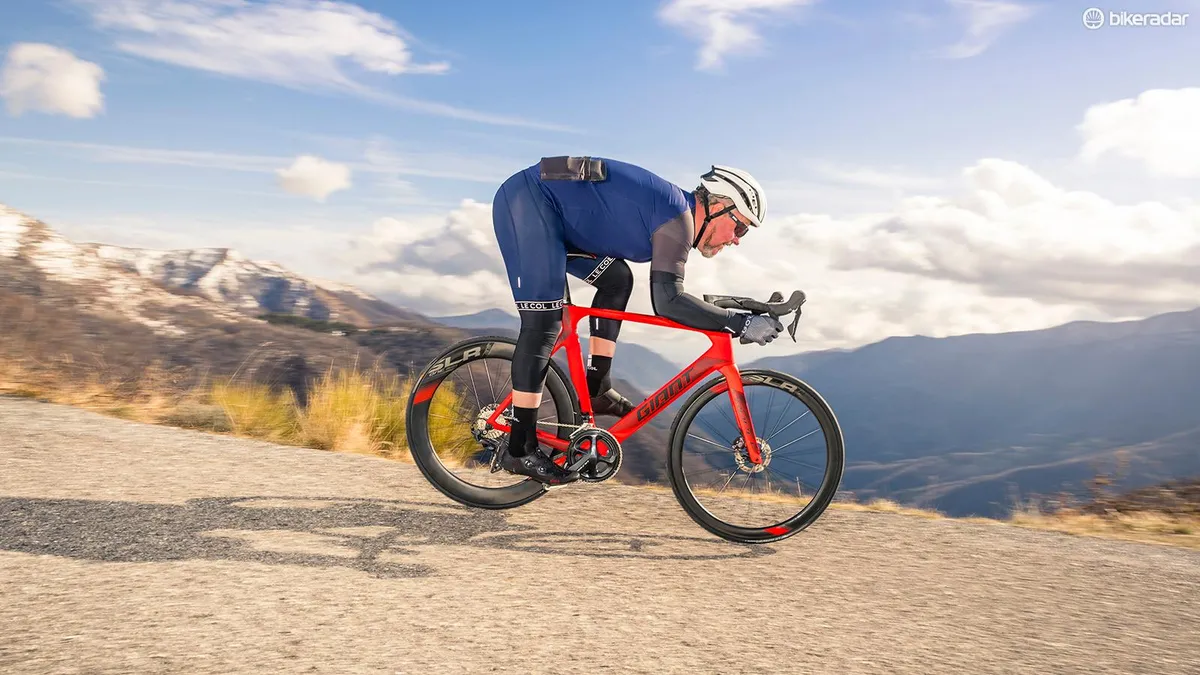The original Giant Propel was one of the pioneers of the expanding aero road bike genre. The new Propel Disc has the DNA of the original rim-brake bike but none of the tube shapes. If you want a rim-braked Propel for 2018, you’ll be getting the old-style frame.
The new Propel is the result of three years of development, with Giant focusing on having the best weight ratio of any aero bike, and has been designed using both Computational Fluid Dynamics (CFD) and wind tunnel work to be adept in adverse wind conditions.
- The Giant Propel Advanced Disc is one of our Bike of the Year bikes for 2018. To read reviews of the other contenders and the categories tested across road, mountain and women's bikes, visit our Bike of the Year hub.
Disc brakes and aerodynamics
Some might feel that an aero bike with disc brakes is an anathema; even Giant thought that initially. “When we started the project three years ago, the whole concept of an aero road bike with disc bikes was something we thought couldn’t be done,” says Andrew Juskaitis, Giant's senior global product marketing manager.
Giant’s in-house carbon fibre development team partnered with French company Aero Concept Engineering (ACE), to reshape the Propel from the disc brakes up. The goal was to reduce drag on the bike and rider while still meeting low weight and stiffness targets.
“It’s not just the frame and fork anymore,” Juskaitis explains, for what constitutes an aero bike these days. “It is every single component and how they affect each other."
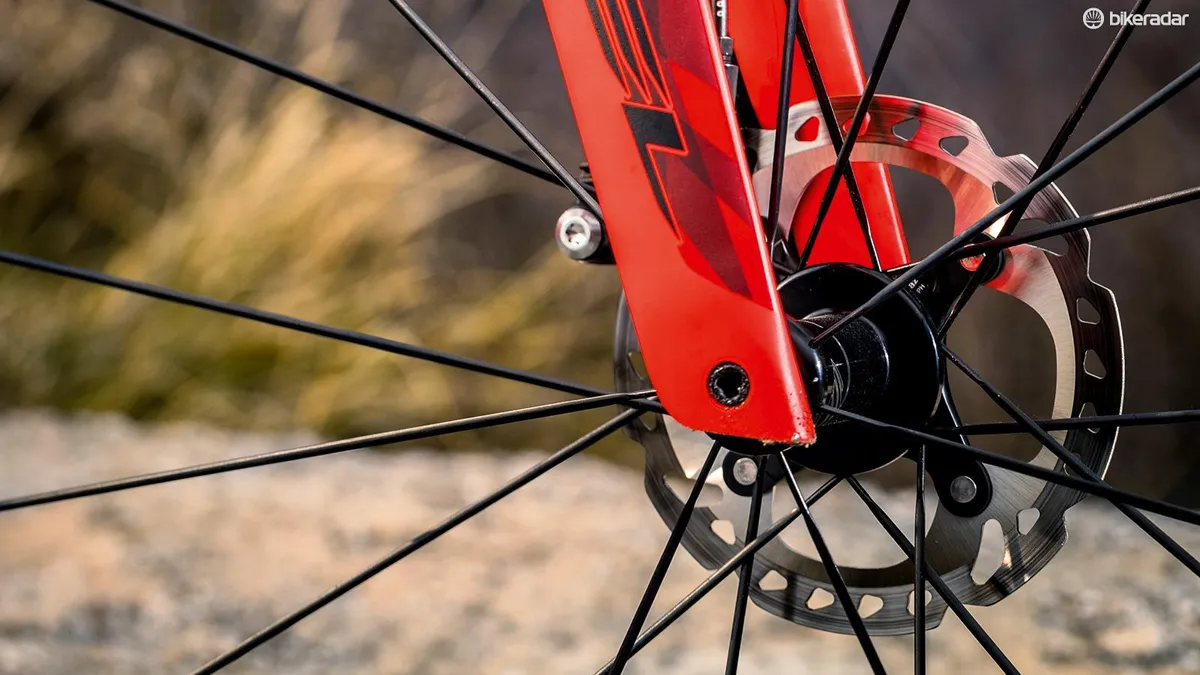
Giant and ACE wind tunnel tested bike and wheel prototypes using a mannequin with articulating legs that rotate, claiming to be the only ones testing with a ‘pedalling’ mannequin. The final shape of the overall bike, Giant claims, provides a 10-watt difference against the old Propel.
According to Giant, the brake unit and rotor don’t cause much drag as the air has already hit the front tyre and rim section before it passes by the brakes. “What’s more important is to keep the fork crown area clean, at the leading edge of the bike, and allowing the air to flow smoothly,” Juskaitis says.
Aside from the new slippery shaping of the chassis, it’s the rise of own-brand equipment that comes to the fore on the Propel. Own-brand kit used to be a bit low rent, but things are changing with the likes of Trek’s success with Bontrager and Specialized’s wheel imprint Roval making significant strides in aero and low weight combinations.
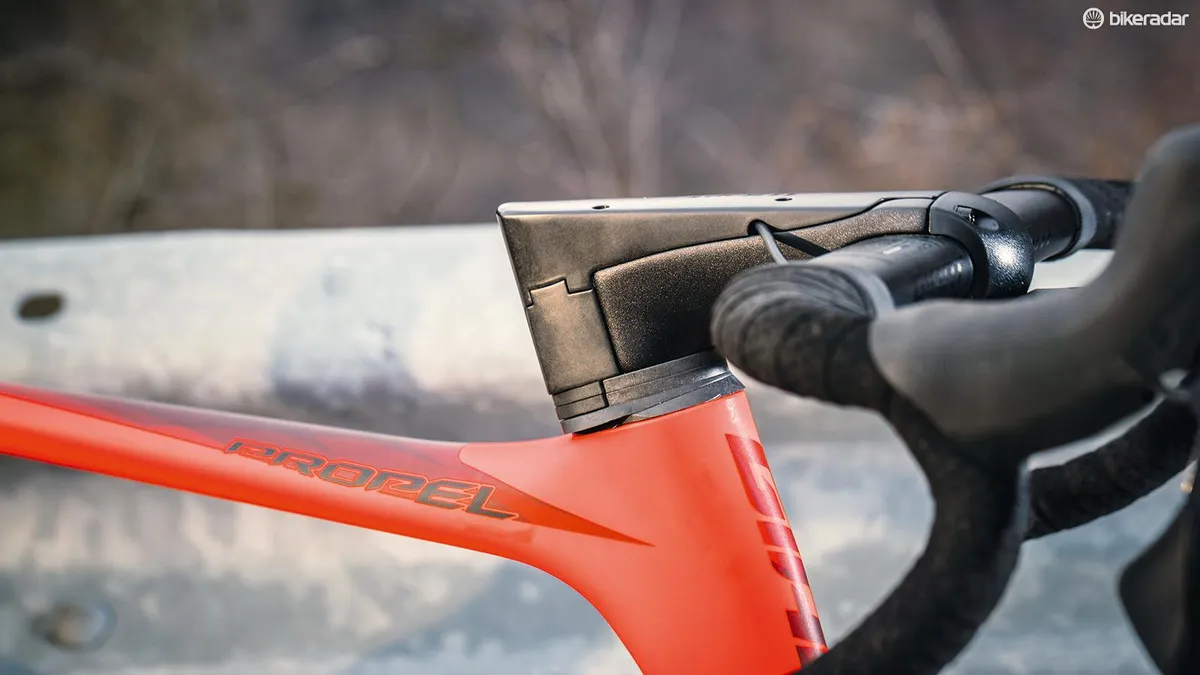
Frameset aside, the Propel Disc’s most notable feature is the stem, which hides the shift and cable lines. “We did a separate stem and bar for two reasons,” explains Nixon Huang, senior global category manager, referring to the trend for one-piece bar/stem combos on some aero bikes.
“One, aerodynamics; the nose cone on the front of the stem is like a boat’s prow to open up the air. Two, for a proper bike fit with the Propel you don’t need to disconnect the cable or brake lines to swap the stem for the correct length,” he continues.
When it comes to an overall package, you can see why Giant used its own equipment. If you’re working on an aero bike it makes sense to control all the parts.
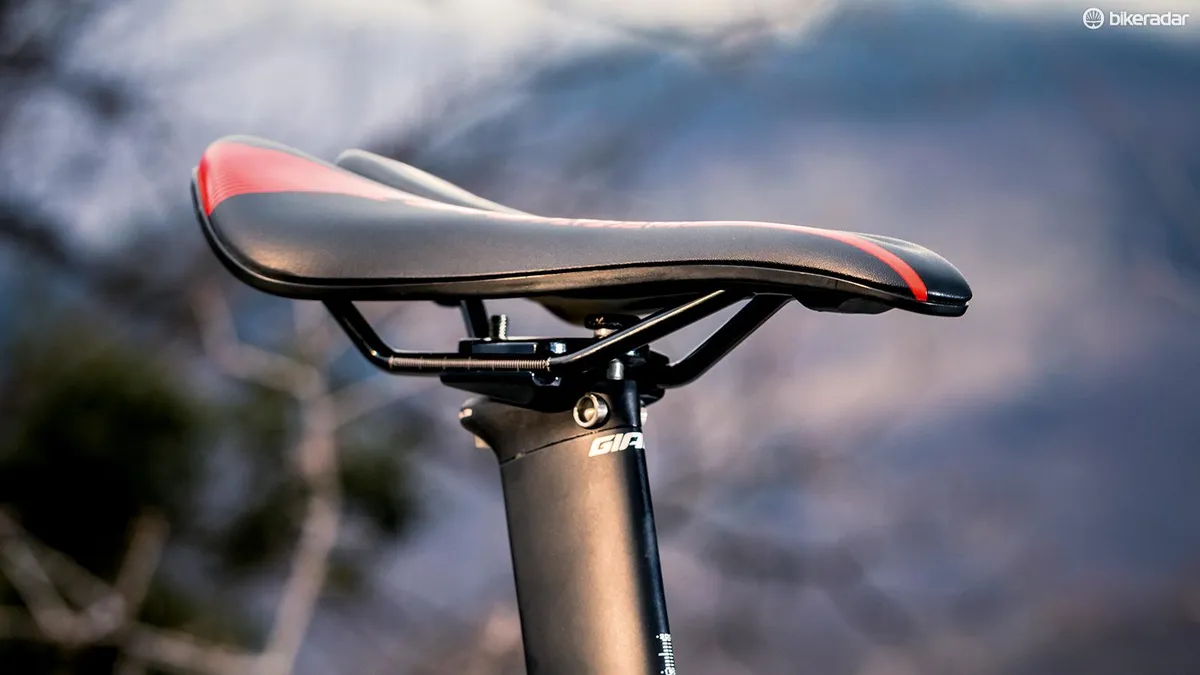
Giant doesn’t have a glamorous second ‘brand’ for its parts, but has partnered impressively with DT Swiss on its wheel program.
The SLR1 carbon wheels have DT’s excellent 350 disc hubs with a 42mm-deep front rim and 65mm-deep rear. As wind has little effect on the handling of a rear wheel, it’s deeper and more aero.
Up front, the shallower design is less likely to be affected by crosswinds. The tubeless-ready rims wear Giant’s Gavia 1 tubeless tyres that come up broader than their nominal 25mm size. They allow you to run lower pressures if the road surface is rough without fear of pinch puncturing.
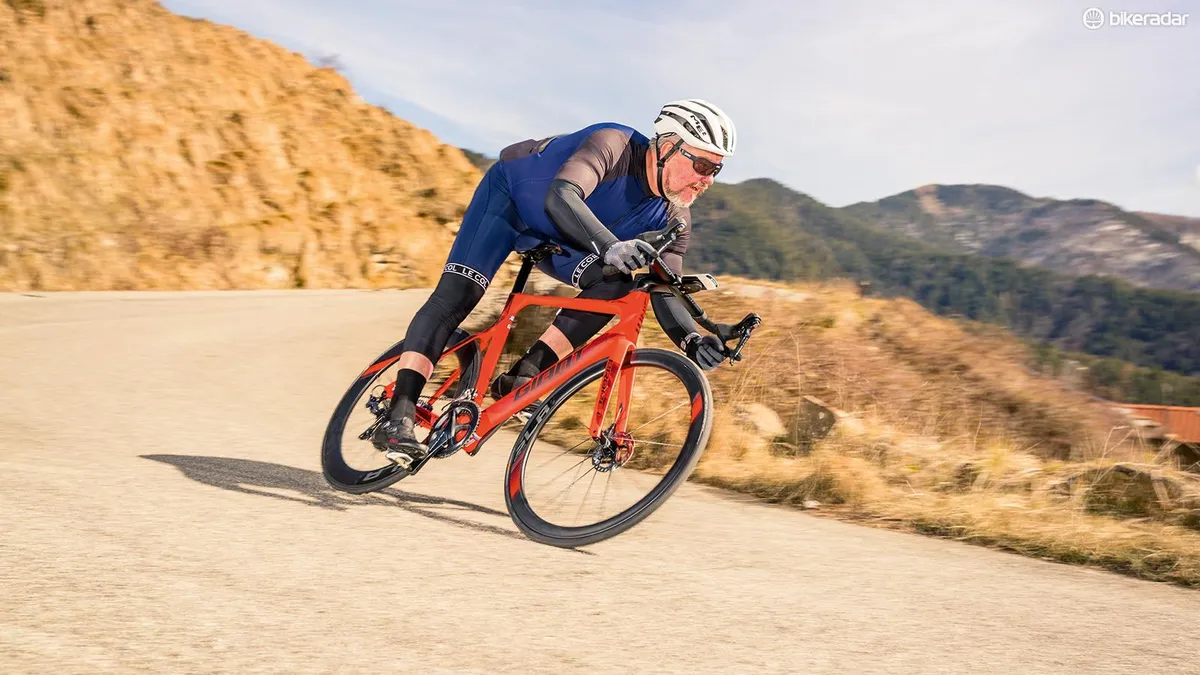
Solid performance
The swiftness of the Propel’s acceleration is stunning and the stiffness through the chassis impresses. It’s not particularly light at 8.7kg, but the Propel doesn’t ride ‘heavy’.
The Ultegra group is flawless, but the groupset doesn’t extend to the top-performing IceTec rotors. The stiffness in every aspect of the Propel meant I didn’t get any noise issues from the brakes. The 52/36 and 11-28 ratios offer plenty of low-end grunt and light enough at the other end for climbing.

The handling errs more towards the stable rather than rapid, and when you thread the Propel through successive corners and push hard downhill it imparts wonderful confidence.
The ride is as firm as you’d expect from a design so focused on beating the wind, but where it scores highly is in the reduction of the sort of high-frequency vibrations that become wearing over longer rides.
The Propel is a seriously clever bike.
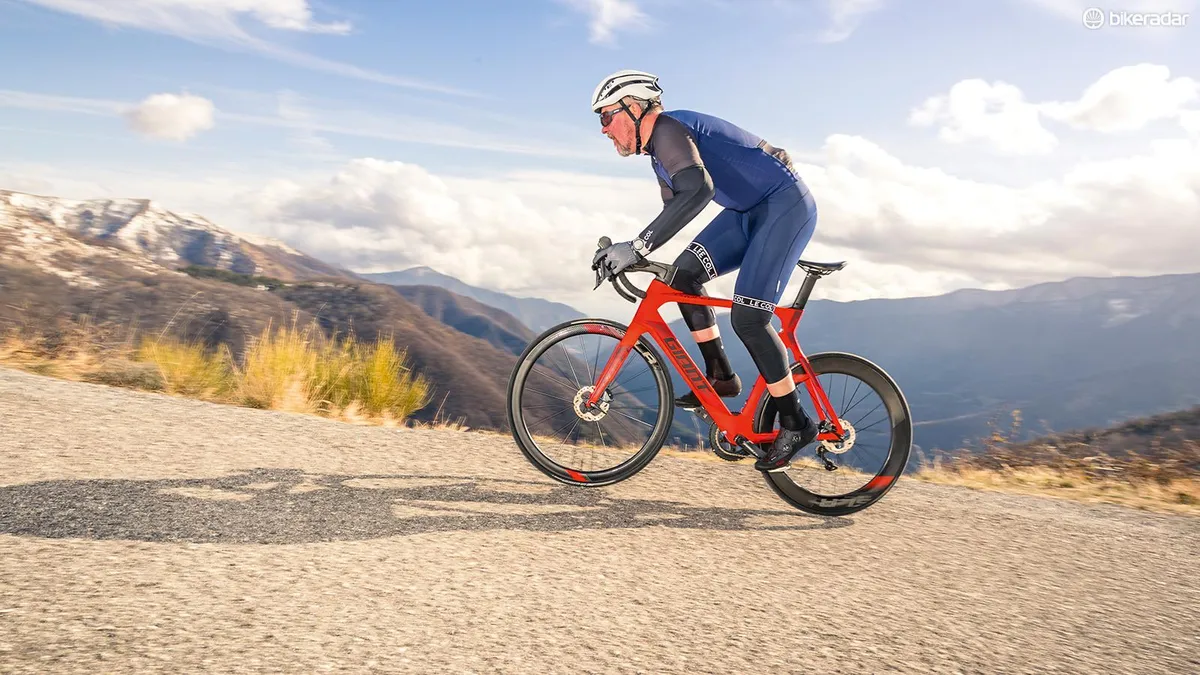
Also consider...
Interested in what else is available at this price point? Have a look at the following list of tried, tested and reviewed bikes.
- Trek Emonda SL6 Pro
- Cannondale SuperSix Evo Dura-Ace
- Cervelo R3D Ultegra
- Specialized Roubaix Comp
- Argon 18 Krypton CS
- Specialized Tarmac Expert
- Willier Cento 1 Air Ultegra
- BMC Team Machine SLR02 Disc Two
- Simplon Kiaro
- Canyon Ultimate CF SL Disc 8.0 Di2
- Lapierre Pulsium 500 Disc
- Bergamont Grandurance Elite
- Genesis Zero Disc 3
- Sensa Guilia Evo Ultegra
- Ridley Helium X 105
- Orbea Orca Aero M20 Team
- BikeRadar would like to thank Life Cycle Adventures, Sanremo Bike Resort, MET Helmets, Le Col, Mercedes Benz and Brittany Ferries for their help and support during our Bike of the Year test.
